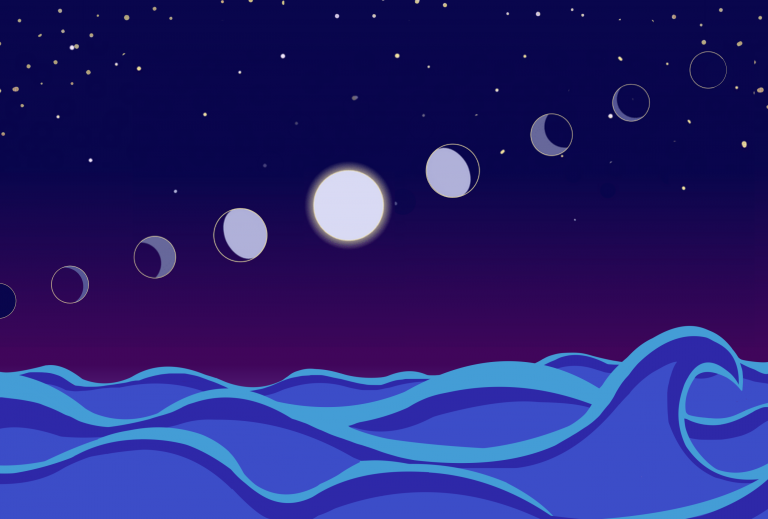
Knowing the phases of the moon is a key to those in search of sea creatures in Humboldt's tides. The tides are high or low depending on the Moons phases, which is also vital information for water safety. Keep reading for more on the Moon and how it plays a role in our beautiful beaches tides.
Article By Sabriyya Ghanizada for EcoNews.
The word lunacy is derived from the latin word, lunaticus, which translates to moonstruck. Fables of the moon causing intermittent insanity in humans have taken on many iterations; for centuries tales of werewolves have been told around the campfire and silver screen alike, to warn of the mythical creatures’ arrival at the full Moon. Some theorize that our bodies being made up of 60 percent water equates to an emotional or physical effect on humans since the Moon has proven effect on the Earth’s tides. While there has been very little in the western and scientific world view of the Moon to prove any of these claims, there is data to back up that the light from a full Moon can make for more sleepless nights. One thing is for sure, the Moon, Earth’s one and only natural satellite, affects Earth’s tides and its light can have effects on biological rhythms here on Earth...
Though you may be familiar with the full Moon and new Moon, the Moon experiences several phases throughout its orbit. Lecturer in the department of Physics at Cal Poly Humboldt, Tyler Mitchell, explained the cycle that a moon goes through in an entire month, or a ‘moonth’ if you will. “If we are starting at the new Moon,” Mitchell said, “we start with the waxing crescent and move on to the first quarter Moon, then its half Moon, waxing gibbous, onto the full Moon. From the full Moon it wanes to waning gibbous and the third quarter Moon waning crescent back to the new Moon.”

C.D. Hoyle, a professor in the Department of Physics and Astronomy, described the relationship between the Earth and the Moon due to their attraction by gravitational force. “The sun is a big massive object so it pulls on all of the planets that surround it,” Hoyle said, “Think of a string on a ball, the Sun’s gravity pulls on all the planets to keep them in orbit. The Earth pulls on the Moon and keeps it on an orbit around the Earth,” said Hoyle.
It’s important to note that while very bright, especially at the full Moon, the light from the Sun is reflected by the Moon. “The Sun is the only light source in the solar system, except on a new Moon, you can kind of see the Moon in a way that’s light from the earth reflecting on the new Moon,” Mitchell said, “That’s called Earthshine and you can see the other part is dimly lit up. Any illumination on the dark part of the moonbeam is light reflected from the Earth.”
Even though the Moon orbits around the Earth, we are only ever getting one perspective of it. The Moon is tidally locked to the Earth, so we have only ever seen the same side of it as it rotates. “Every time the Moon orbits the earth it rotates exactly one time,” Mitchell said. “The rotation and orbit is the same for the Moon, so it rotates slowly, so the same side faces us.”
Read the rest of the article here.
